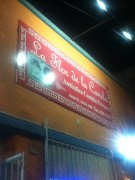Organ Grind: A South American Food Journal Part 8, Peruvian Food in Argentine Wine Country
<a href=”http://brokeassstuart.com/wp-content/pictsnShit/2014/03/flordecanela-e1395855282654.jpg”><img class=”size-full wp-image-68910 aligncenter” alt=”flordecanela” src=”http://brokeassstuart.com/wp-content/pictsnShit/2014/03/flordecanela-e1395855282654.jpg” width=”135″ height=”180″ /></a>
Mendoza Province, abutting the Andes in west central Argentina, is a big smudge of green amidst a large expanse of merciless aridity. Its verdancy is owed to the enslavement of Andean snow; upon turning to water, it runs downhill to create Mendoza River, which is then channeled into a complex of irrigation ditches, where it’s rapidly suckd up by thirsty vines sagging with bunches of Cabernet and Malbec grapes. Coming upon the region’s large wine-producing country is startling; there’s only an abrupt transition from off-blonde to emerald. In a similar fashion was I affected by the discovery of an authentic and impressive Peruvian restaurant in Mendoza city. Variety is a spice missing from Argentinian food (as is spice itself, largely). If your lust for steak is insatiable, have no fear; any place where humanity is extant in Argentina, there will be eau de boeuf wafting on the breeze, leading most often to a good hunk of meat. If, however, your yen for ovine blood is easily slaked, then prepare for monotony.
The other main cornerstones mortared into the monocromatic pavement of Argentine cuisine are pasta and pizza, both of which have clogged the arteries and anuses of countless Westerns for decades. The city of Mendoza is no exception in its slavish devotion to the Argentine food trifecta (steak, pizza, pasta). If the custom in Mendoza was to sing a song while lazily traipsing along Mendoza’s sycamore lined lanes whilst prowling for sustainance, it would be composed of an onomatopeic<b><i></i></b> litany involving the words parrilla, pizza, papardelle, and puff pastry. Seldom is the occasion when a step oustide the normative culinary boundries yields anything but a weary, half-assed stab at authenticity that misses by several feet. Not the case with Flor de Canela, a gem of a Peruvian family run restuarant 20 minutes walk from the central plaza.
My first footfall upon the tiled floor was met with a shrill, gleeful scream issuing from one of two or three young progeny running around unteathered like fireflies. Framed posters depicting the greatest hits of Peruvian tourism crowded the yellowing walls. The stooped gentleman behind the bar who I assumed to be the owner flicked a slow glance in my direction indicating a semblance of acknowledgment, which was invitation enough for me to park my narrow butt upon a plastic chair. Between mouthfuls of a spicy mixed ceviche, I gleaned from conversation with said fellow that the place had been around eight years. The next night I enjoyed a quick exchange with the woman of the house, this time while energetically chewing a tasty but slightly chewy meal of goat with rice and beans. Both visits served to restore my faith in the soul-restoring power of strong flavors. P.S.: The ubiquitous empanada makes the Argentinian trifecta mentioned above a quadfecta.
<strong>Flor de Canela</strong>
<strong>Juan B. Justo 426</strong>
<strong>Mendoza,</strong> <strong>Argentina</strong>



